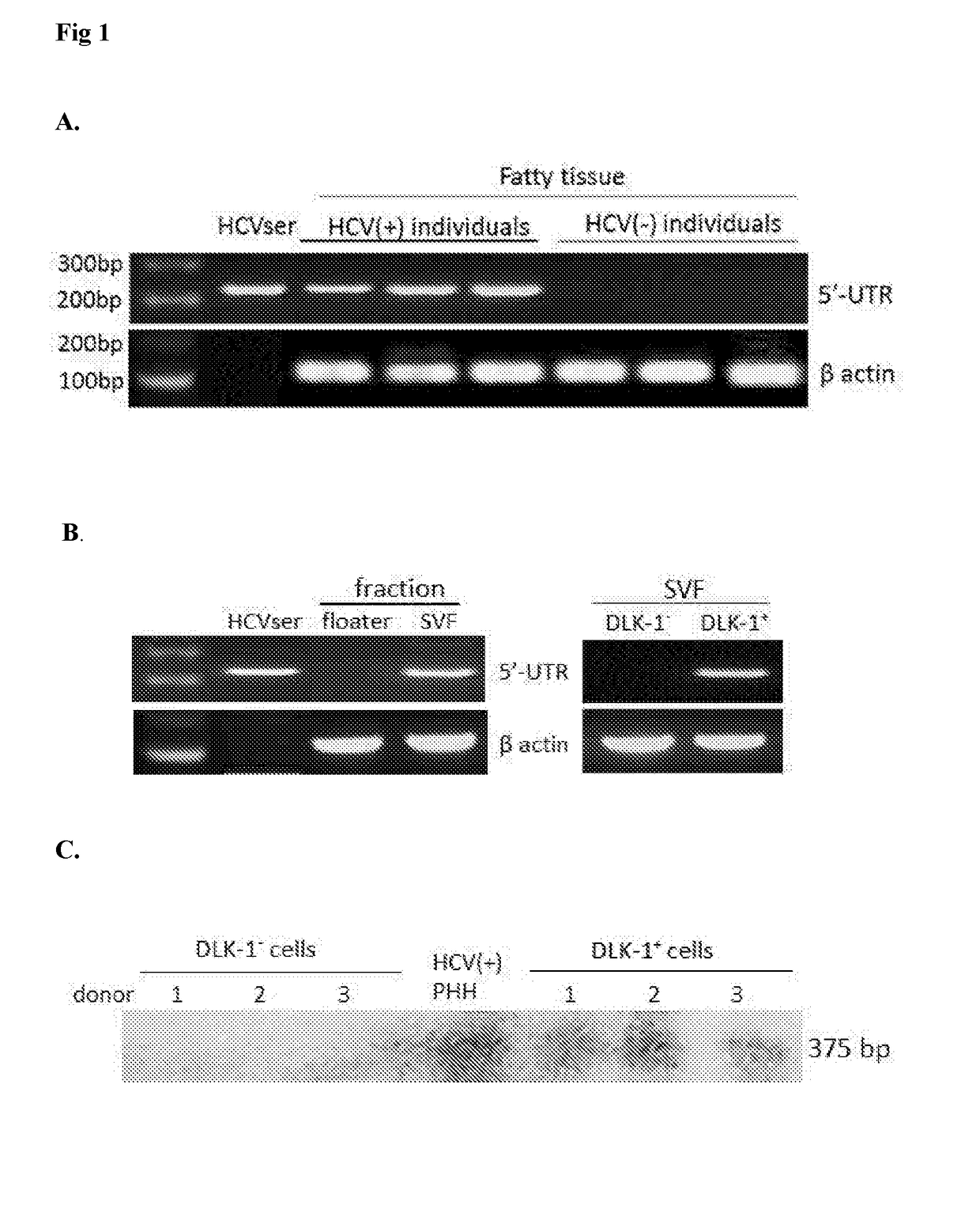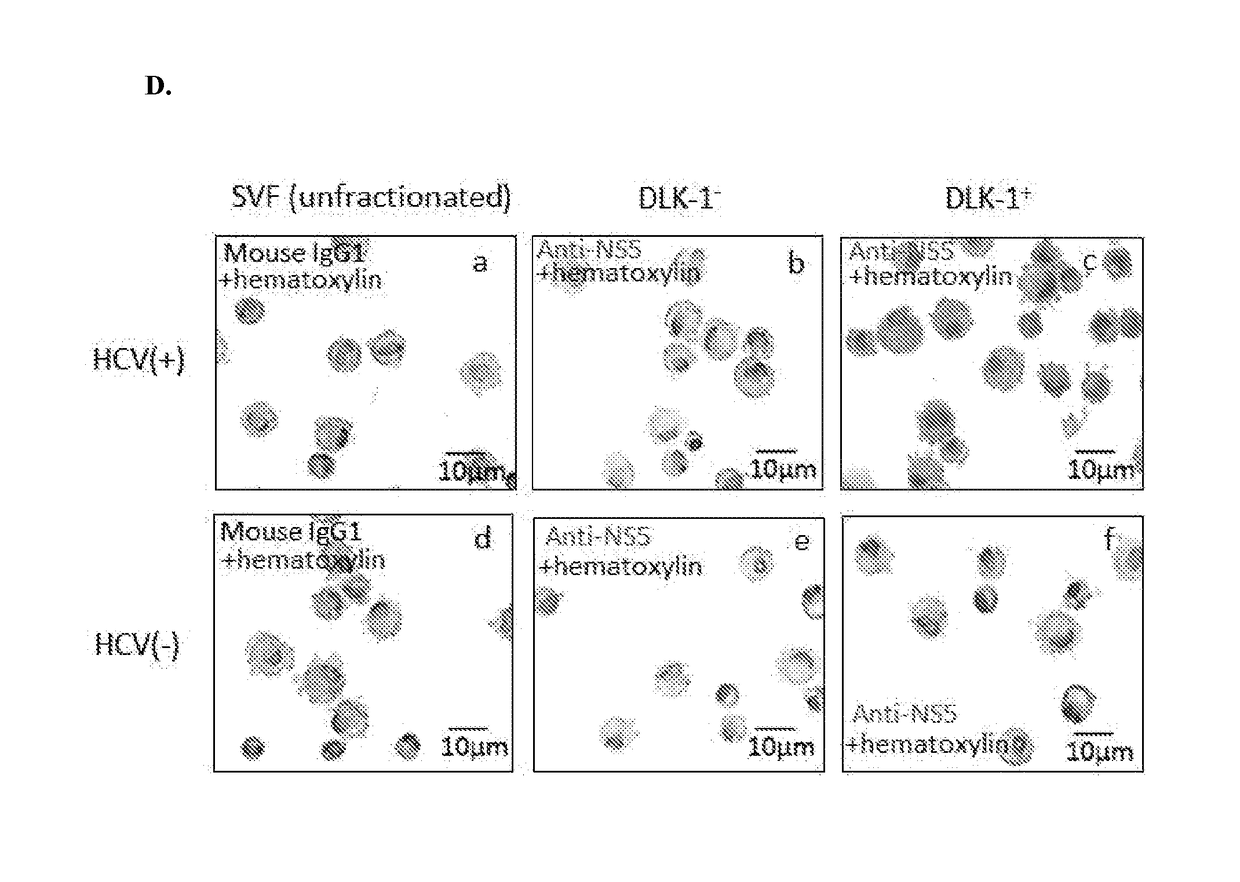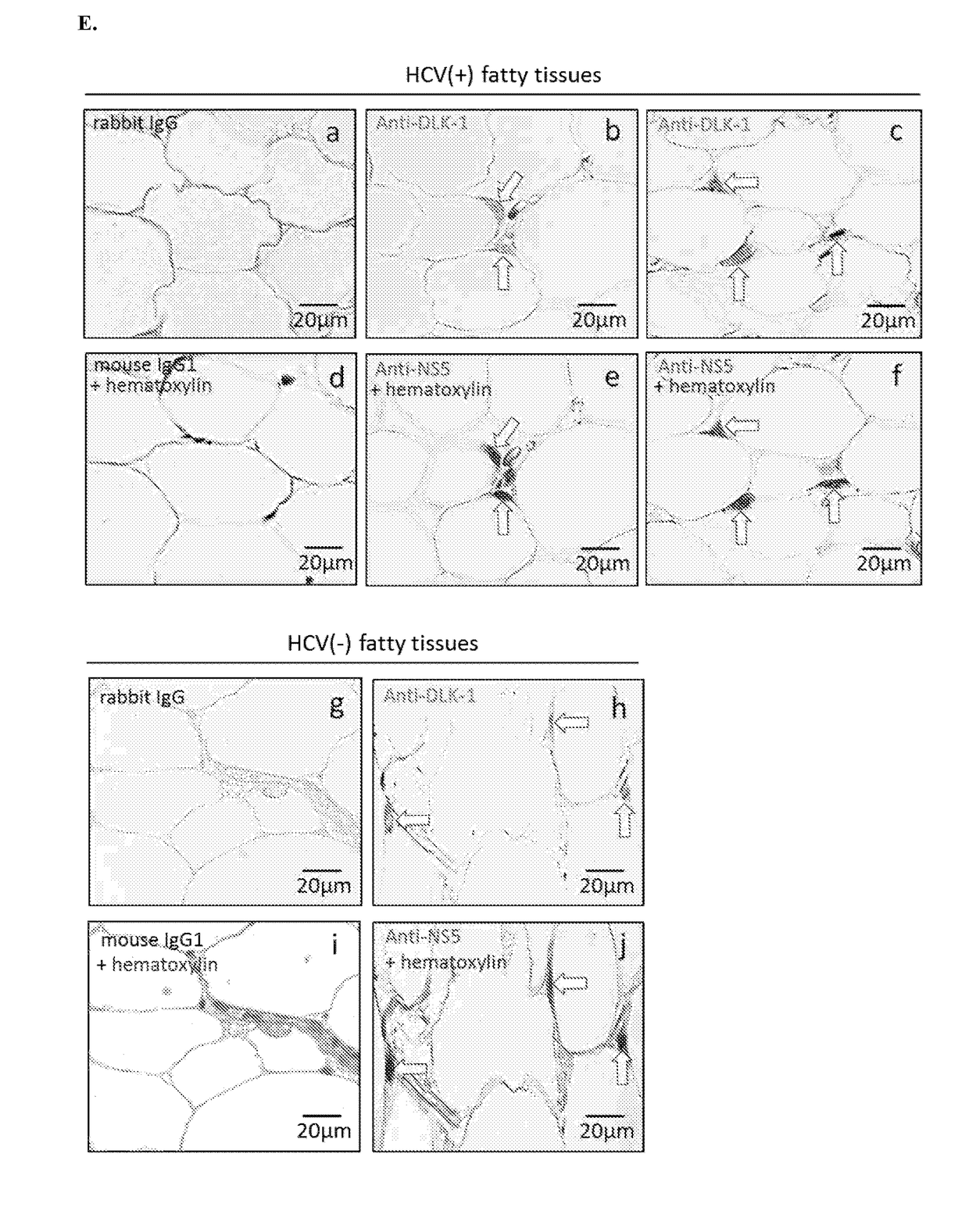Employing human adipose-derived stem cells to propagate serum-derived hepatitis c virus and use thereof
a technology of hepatitis c virus and stem cells, which is applied in the field of systems and methods for propagating hepatitis c virus, can solve the problems of severely limited vitro systems to investigate the extrahepatic replication of hcv, and achieve the effects of not significantly affecting cell viability, reducing viral transcripts, and reducing viral copies
- Summary
- Abstract
- Description
- Claims
- Application Information
AI Technical Summary
Benefits of technology
Problems solved by technology
Method used
Image
Examples
example 1
hADSC are Targeted by HCV In Vivo
[0124]Clinically, an interesting feature of HCV infection is that HCV(+) patients may have excessive fat accumulation in the chronically infected liver, i.e., hepatic steatosis46,47, and the severity of hepatic steatosis appears to correlate with the rate of liver fibrosis48. Recent studies also illustrate that HCV RNA replication can be stimulated by increasing the availability of saturated fatty acids, and is inhibited by polyunsaturated fatty acids or inhibitors of fatty acid synthesis49,50. These findings suggest that fat metabolism plays an important role in the life cycle of HCV. We therefore hypothesized that cellular components of fatty tissues might be implicated in HCV infection in vivo.
[0125]To test our hypothesis, we harvested subcutaneous fatty tissues from HCV-infected or -uninfected individuals (Table 1) and extracted RNAs for RT-PCT of HCV-specific 5′-UTR transcripts, using HCVser genotype 1b (HCVser-1b) as a positive control.
TABLE 1A...
example 2 naive
Example 2 Naïve HCV(−) hADSC are Susceptible to HCVser Infection and Replication In Vitro
[0131]To examine if naive HCV(−) hADSC were susceptible to HCVser infection and replication in vitro, we prepared hADSC from HCV(−) individuals and passaged them in culture. Passage-3 (p-3) or p-4 cells in suspension (in Eppendorf tubes) were incubated with HCVser (Table 2) at 0.2 moi in a final volume of 1 ml (i.e., 1×105 5′-UTR copy number versus 5×105 hADSC cells).
TABLE 2HCV genotype and 5′-UTR copy numbers of HCV(+) serumused in this study. All patients had no evidence for infectionof HIV or hepatitis B virus. They also had no signs of acuteinfectious diseases. Sera were collected from September 2011to February 2014 and used immediately or stored in −80°C. until use. Sera of patient no. 1-5 were used in FIG. 2A-D,and the remaining were used in FIG. 2E-F, FIG. 3 and FIG. 4.5′-UTR copyPatient numberGenotypenumber / ml11b176,55421b489,22631b125,11742b22,33852b269,27461b2,204,19272a10,235,07281b3,...
example 3
hADSC-Produced Virions are Genuine “Virions” Exhibiting Biological Properties of Clinical Isolates
[0139]To examine the infectivity of hADSC-produced virions (labeled as “HCVadsc”), we infected p2 hADSC of “donor 1” with HCVser-1b and collected supernatants on day 21 (labeled as “HCVadsc(1)”). After filtration through a 0.22-μm pore filter, HCVadsc(1) was used to infect hADSC of “donor 2” to make HCVadsc(2), which was subsequently used to infect hADSC of “donor 3”. Results confirmed that HCVadsc possessed infectivity towards naive hADSC of different donors, with a relatively consistent replication efficiency as seen in the initial infection by HCVser (FIG. 3A). Similar observations were also made for HCVadsc derived from supernatants of hADSC initially infected with HCVser-1a, -2a and -2b (data not shown).
[0140]We next studied the permissiveness of hADSC at different passage number by infecting p2, p6, p9 and p15 hADSC with HCVser-1b and measured viral copies after 21 days' continuou...
PUM
| Property | Measurement | Unit |
|---|---|---|
| Time | aaaaa | aaaaa |
| Time | aaaaa | aaaaa |
| Mass | aaaaa | aaaaa |
Abstract
Description
Claims
Application Information
 Login to View More
Login to View More - R&D
- Intellectual Property
- Life Sciences
- Materials
- Tech Scout
- Unparalleled Data Quality
- Higher Quality Content
- 60% Fewer Hallucinations
Browse by: Latest US Patents, China's latest patents, Technical Efficacy Thesaurus, Application Domain, Technology Topic, Popular Technical Reports.
© 2025 PatSnap. All rights reserved.Legal|Privacy policy|Modern Slavery Act Transparency Statement|Sitemap|About US| Contact US: help@patsnap.com



